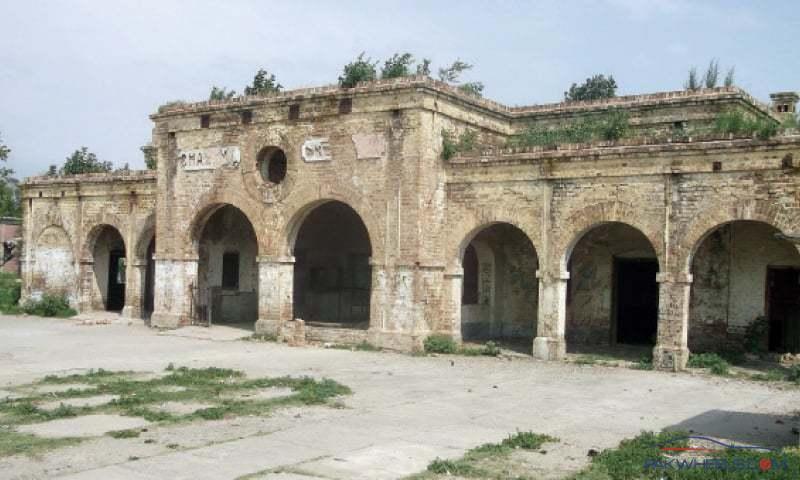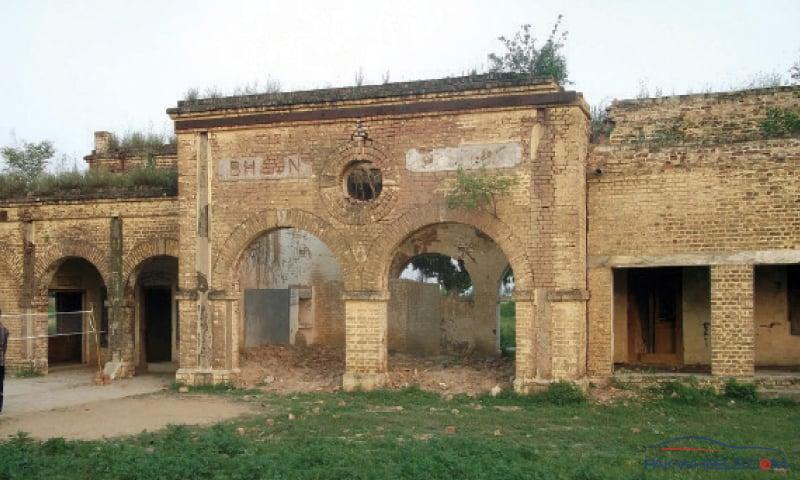
<article class="story story--single push-half">
</article>
Every day, Sheikh Iqbal Ali, 82, sits at the gate of his house which opens towards the Bhoun Railway Station, about 12 kilometres south of the Chakwal city. The spot where he puts his chair is surrounded by hundreds year-old banyan trees and plants of different kinds. The aroma which emanates from the flowers makes the atmosphere beguiling. But one can see a nostalgic pain in the watery eyes and pimple-riddled face of this old-man as he gazes at the crumbled building of the railway station which was once a bustling site. ?I feel pain when I see the ruins of the historic building of the railway station,? he says.
Sheikh Iqbal was the station master of the Bhoun Railway Station when it was closed down in 1993 by the then government of Nawaz Sharif. He still lives in the official residence of the station master which is the sole building on the 75-km-long Mandra-Bhoun railway track. The house is still well-kept and preserved by its inhabitant. All other buildings and installations, including half a dozen railway stations, on the track have become relics of the past.
As the Potohar region particularly the district of Chakwal has been martial area for ages, the British rulers laid down the railway track here in the early 20th century. The track was laid down in three stretches. On May 1, 1915, the 44.04-km-long Mandra-Dhudial section was opened while the Dhudial-Chak-Naurang and Chakwal-Bhoun sections were opened on June 1, 1915, and January 15, 1916, respectively. The track was the sole source of transportation for the people of the area and remained so till the early 1980s.
?When I took the charge as the station master of the Bhoun Railway Station in 1986, the number of passengers was very thin. Sometimes hardly a ticket was sold but the train had to run irrespective of the number of passengers,? recalls Sheikh Iqbal. ?The train used to take four to five hours to reach Rawalpindi while the passenger vans would only take one-and-a-half hour to cover the distance. That was why people started preferring the passenger vans,? he added.

Due to the shrunken number of passengers and pathetic plight of the train service, the track along with more than a dozen others became a white elephant, resulting in its closure.
The track passing through the Chakwal district was auctioned while the residents of the villages falling in the Rawalpindi district got a stay order against the dismantling of the track. At that time, Chakwal?s MNA Abdul Majeed Malik was the federal minister for food and agriculture. His rival politicians alleged that the track was dismantled with his connivance and thrown in Nawaz Sharif?s Itifaq Foundry. But in his recently-published autobiography, ?Hum bhi wahaan mojood thay? (I was there too), Mr Malik while refuting the allegation states that being a minister for food and agriculture he had nothing to do with the affairs of the railway. In reality, this track had become unviable for profit and instead of generating revenue was causing heavy loss on the railway. ?Sometimes there were only four to five passengers,? he maintains.
From its closure in 1993 to 2010, the vast chunk of the railway land from Mandra to Bhoun remained at the mercy of land grabbers. Now a vast portion of the land has been encroached upon. In the Chakwal city, two roads, a public park, the offices of Rescue 15 and traffic police, a mosque and a market have been set up on the railway land while in Dhudial a mosque and shops have also been built on the railway land. The line is hardly visible as it has been covered in thick grass and weeds. The historic buildings of the railway stations, offices and residential quarters in Bhoun, Chakwal and Dhudial have crumbled and their bricks have been taken away.
